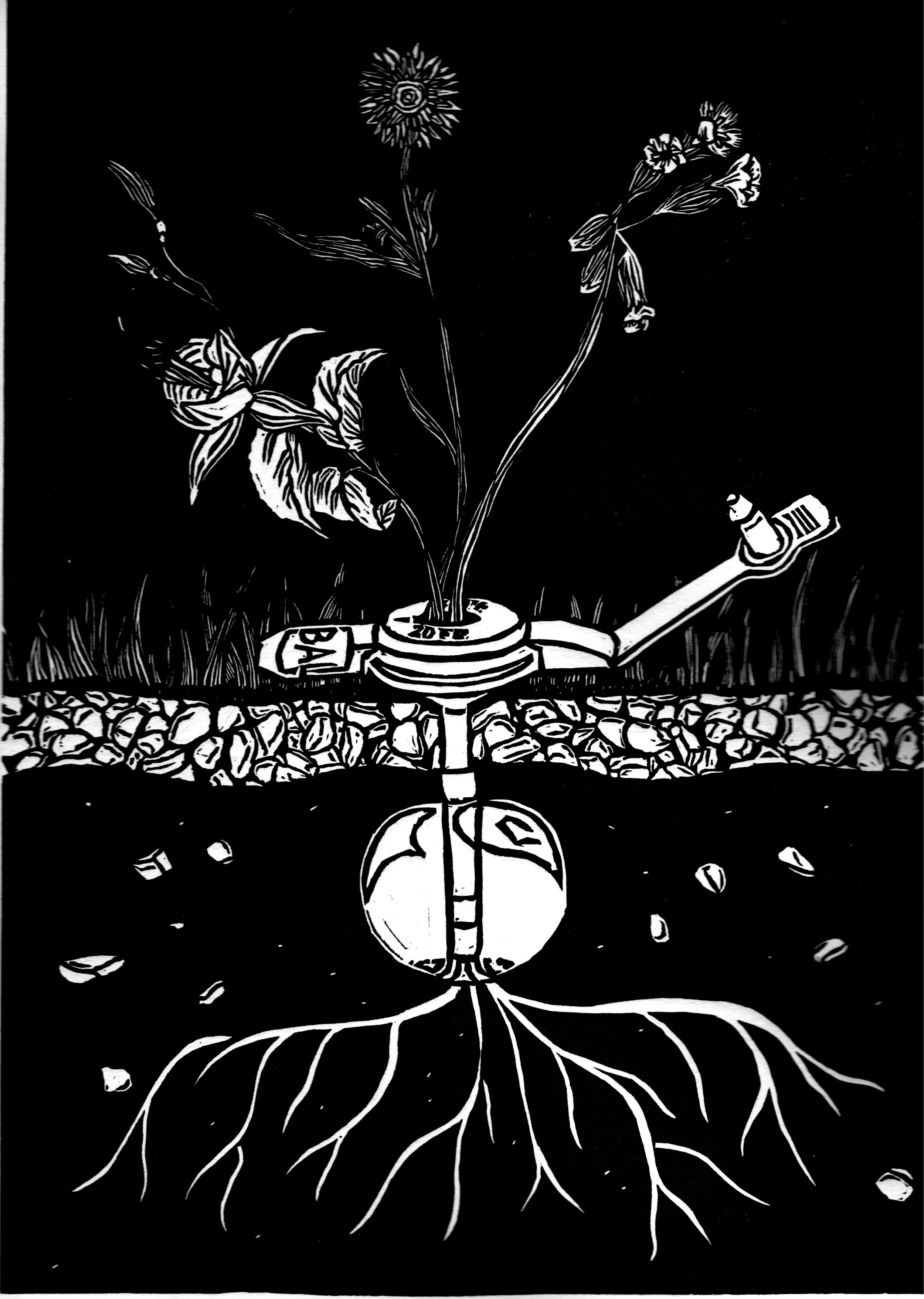G-tube Feeding 101
‘Underlying Growth’ by Kathryn Lean
New to the great, life-changing device that is a gastrostomy tube? Take note of these top tips.
Robyn Wortel was a registered nurse and is now the clinical education specialist at Avanos, maker of the MIC-KEY G-tube and many other nifty enteral-feeding devices. For more than 20 years, Robyn’s job has been to educate doctors, nurses and caregivers who are introducing people to tube-feeding.
‘They are the first line of contact for parents and family members and you would hope that the information you share with them gets shared with the people who need it,’ says Robyn. ‘But then, there’s so much else going on in those lives, so how much can you take in?’
In truth, there’s a flood of finicky details to contend with when a tube enters your world. So it’s handy to have some pointers in print, straight from an expert. “Oh no, no,” Robyn protests when described – accurately – in this fashion.
“You know what they say about an expert? That an ex is a has-been and a spurt is a drip under pressure. If I’ve got some knowledge to share, I’m always happy to share it.”
And with that, Robyn offers her best tips for getting a grip on G-tubes:
Don’t fear the tube
It’s okay. You can touch it. You can feel it. It shouldn't be painful for your loved one at all and if it is, there might be something wrong. Maybe the fit isn’t right. You should be able to turn or rotate the tube and the skin disc should sit just a little bit above the skin. Think of this like putting on a pair of jeans before you’ve had lunch. You need a little bit of space there because there’s a little bit of expansion as a tummy fills.
Prepare for change
A G-tube goes in looking white but it never stays white. The colour it changes to is very much dependent on what food and medication is being fed through the tube. Those things colour a tube and they also colour the water that you use to fill the balloon. This is especially noticeable if you’re doing blenderised feeds and using highly colourful foods like beetroot, spinach or carrots.
Test the water
The silicone in the balloon is a semi- permeable membrane, which is why you get variation in colour in the water and also why you get a little bit of volume loss. You can put 5ml in today and next week check it and it’s 4ml. We recommend checking the water every week, but you might only need to check every two or three weeks if you’ve got consistent care and can gauge what’s happening. It’s really important to trust your gut here.
Get the right fit
If you don’t have the tube fitted correctly, you’re going to have problems. Especially with the low-profile MIC-KEY but also if you’ve got a long tube, the disc that sits on the skin needs to sit at 2-3mm above skin level. If it’s sitting higher, you’re going to have friction and changes in the position of the tube. It’s going to affect the shape of the stoma and it's going to allow gastric leakage to escape.
Friction creates hypergranulation – a ballooning of highly fragile, very moist ‘proud flesh’ that bleeds easily and can be painful. If you don’t have friction, you probably won’t get that type of granulation.
Keep the stoma site dry
I love the button pads that Stacey at Tubie Fun makes. But whatever you might put around your stoma, if it gets wet, you need to change it. Because even though it’s got a wicking material in it, if it’s moist and it sits on the skin, you’re going to end up with soggy skin which is more likely to break down and create problems. Some stomas will always have some moisture and others are perfectly dry. It’s very much person dependent.
Normalise, normalise, normalise
Do whatever you can do to make tube- feeding as normal as possible. The most basic need of any parent or carer is being able to feed the one you love. If you can do that in whatever way it takes, however it works, and you can see that your loved one is thriving, then you’re doing the best job you can. So have a pat on the back for that.
This article was made in partnership with Avanos. For easily digestible information about tube-feeding at any age and any stage, visit TubeFed by Avanos at tubefed.com.au.

